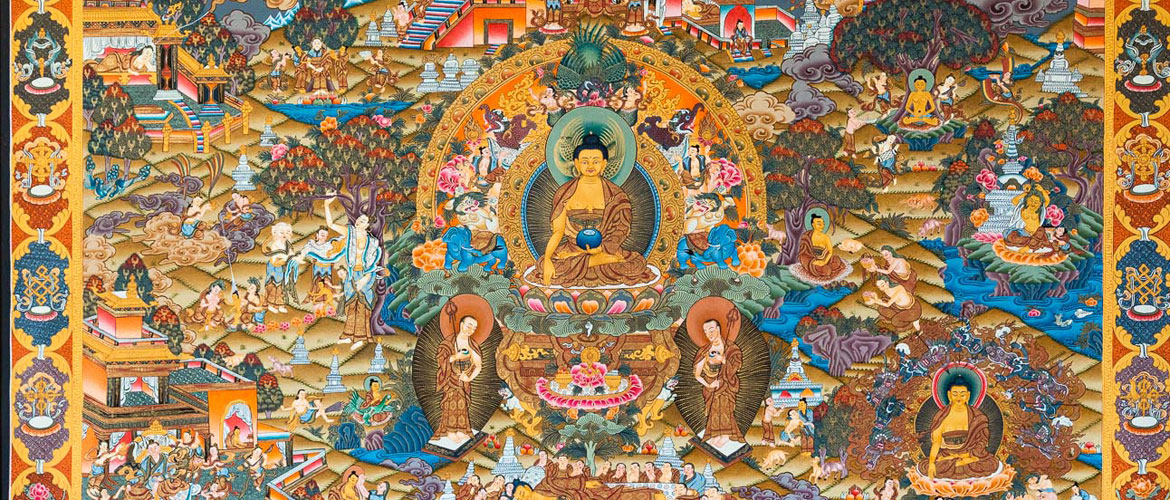Tibetan Vajrayana Buddhism is synonymous with the colourful thangka painting. Depicting the Buddha and other cosmic Buddhas, as well
Thangkas literally mean ‘things that one unrolls’, after the Sanskrit pata. Traditionally, thangka paintings are kept rolled up and only unfurled during festivals or Vajrayana pujas. Among the paintings exhibited are those related to the life of the Buddha, a popular subject, as well as depiction of historical events related to important monks. Some of the others depict myths associated with different deities. As is well known, while meditating using Vajrayana practices, many yogis use thangkas of mandalas or of their chosen deity to guide them into becoming one with the deity, which is the highest goal of such meditation practices. These thangkas therefore, aren’t just paintings, but important meditation guides. This particular exhibition’s pieces come froma private collection and some are travelling from the Virginia Museum of Fine Arts in the US. For more information, visit the gallery’s website or call +91-9811-672731.
exhibition
New Delhi
thangka


